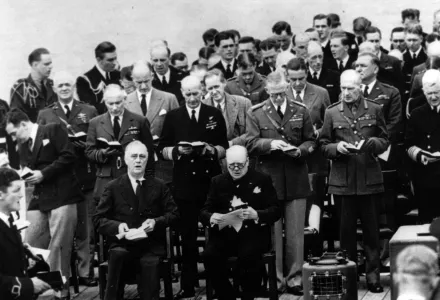
Abstract
Many accounts of the formation of American and British grand strategy during World War II between the fall of France and the Pearl Harbor attacks stress the differences between the two sides’ strategic thinking. These accounts argue that while the Americans favored a 'direct' Germany-first approach to defeating the Axis powers, the British preferred the 'indirect' or 'peripheral' method. However, a review of Anglo-American strategic planning in this period shows that before official U.S. wartime entry, both sides largely agreed the British 'peripheral' approach was the wisest grand strategy for winning the war.
Golub, Grant. "The Eagle and the Lion: Reassessing Anglo-American Strategic Planning and the Foundations of U.S. Grand Strategy for World War II." The Journal of Strategic Studies, (2022).
The full text of this publication is available via The Journal of Strategic Studies.




